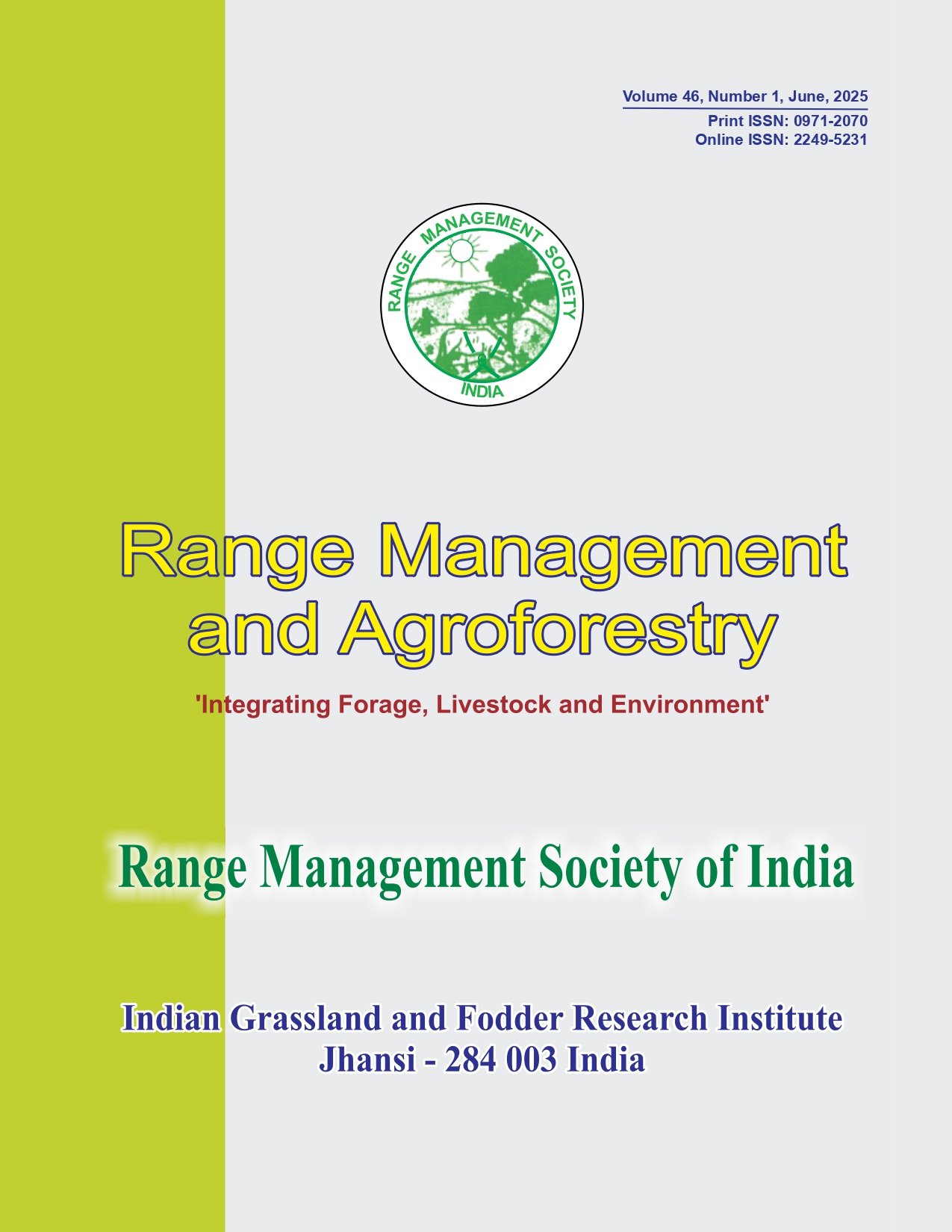Genetic improvement of fodder cowpea through induced mutagenesis
DOI:
https://doi.org/10.59515/rma.2025.v46.i1.23Keywords:
Dual purpose, EMS, Fodder cowpea, Green fodder, M2 generationAbstract
The study was focused to develop superior fodder cowpea variety for fodder and seed yield through induced mutagenesis. For this, the seeds of fodder cowpea variety Aiswarya were taken and mutation was induced using ethyl methane sulphonate (EMS). Effective dosages were fixed based on lethal dose 50 (LD50) and M1 and M2 populations were grown. There were nine treatments and one control. Both quantitative and qualitative traits were recorded and analyzed in M2 generation. On analysis, green fodder yield and dry matter yield was found enhanced way better than control. All the quantitative traits like number of primary branches per plant, number of leaves per plant, days to first flowering, days to 50% flowering, green fodder yield per plant, dry matter yield per plant, leaf stem ratio, leaf dry weight per plant, stem dry weight per plant, leaf area index, seed yield and days to maturity except plant height showed significant variation in the mutated population. The results were comparable to control, for seed yield. From these observations, 0.43% EMS treatment was found to be the best treatment for developing dual purpose fodder cowpea. This treatment could be carried over for further generations and released as varieties or can be used as parents for future breeding programs.
Downloads
Downloads
Published
How to Cite
Issue
Section
License
Copyright (c) 2025 Arya Sukumaran Nair, Gayathri G., Usha C Thomas, Beena Thomas, Amritha Varanya, Priyanka Hulsure

This work is licensed under a Creative Commons Attribution-ShareAlike 4.0 International License.







